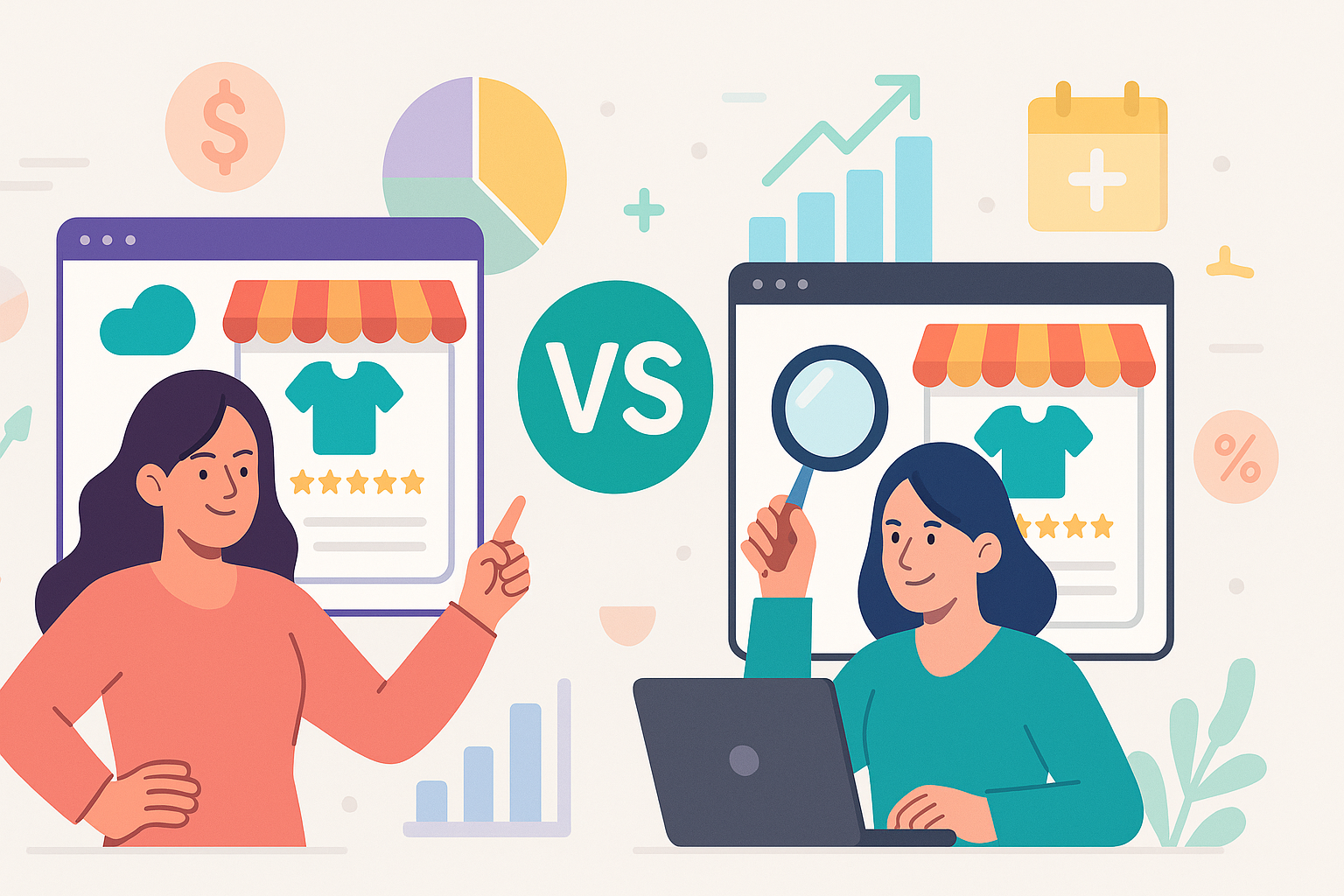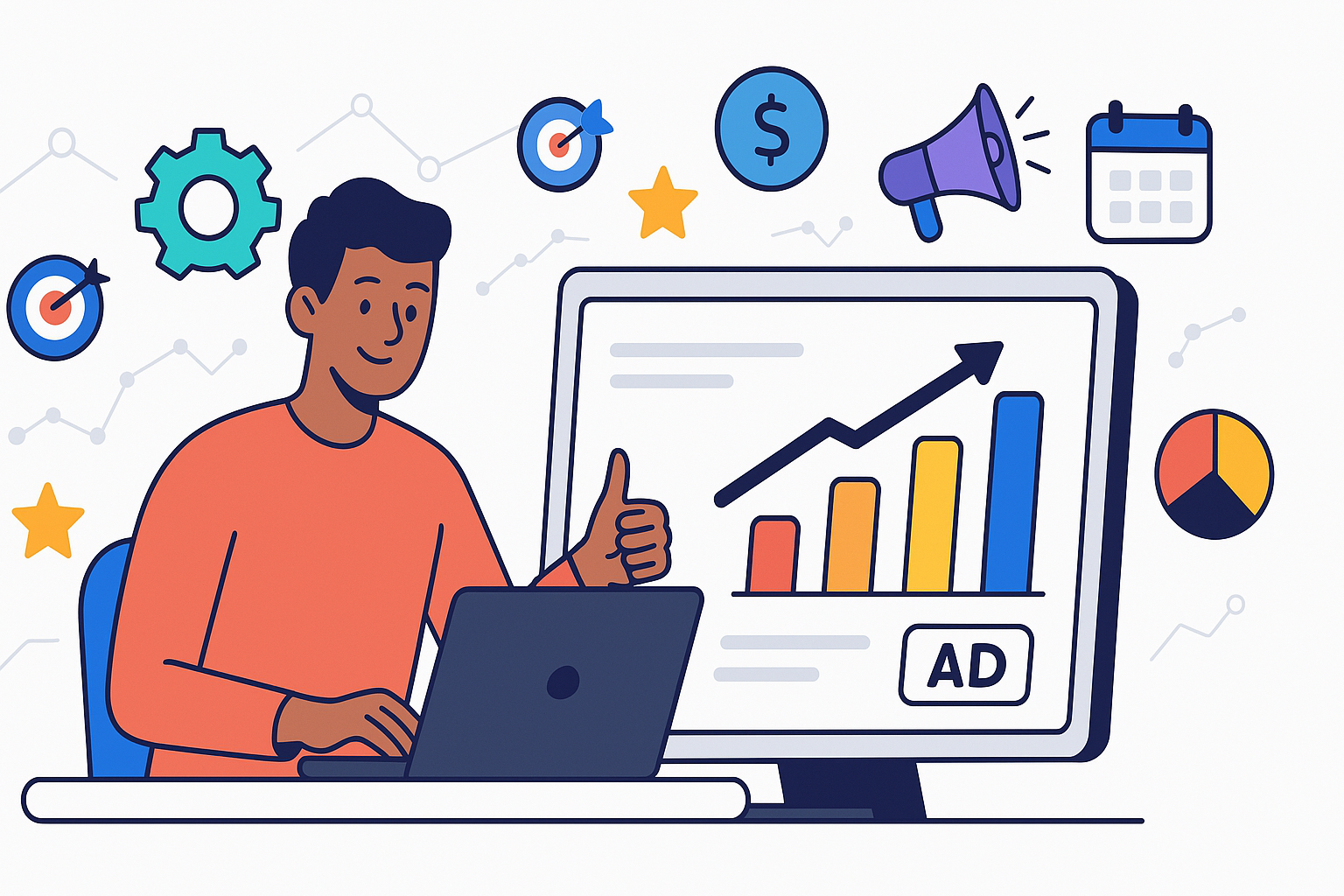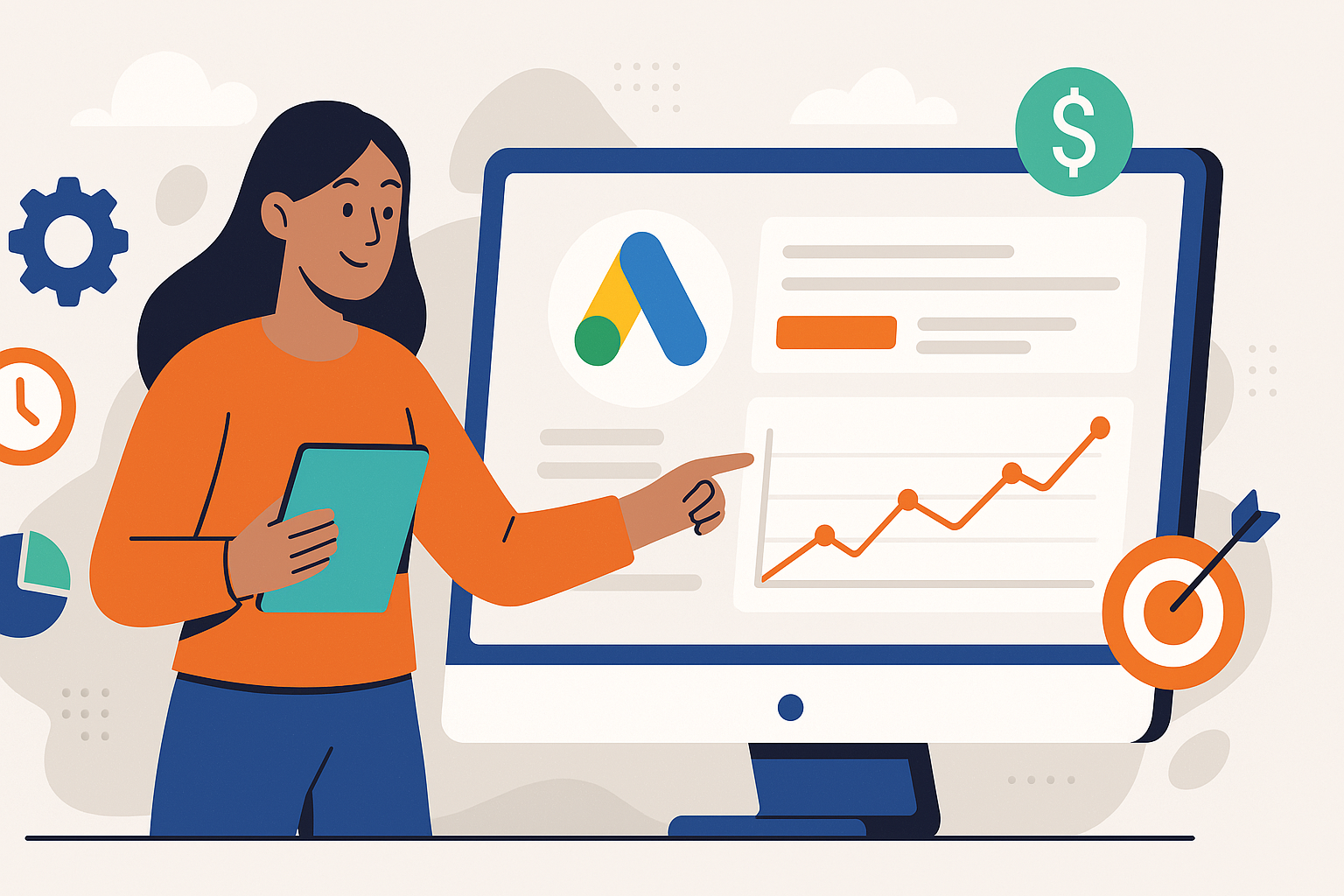Unlock Exponential Growth: How Data-Driven Digital Marketing Increases Sales
by Francisco Kraefft on 27 Aug, 2024
You understand the digital landscape. You've implemented campaigns, tracked clicks, and perhaps seen incremental gains. Yet, the challenge often lies in achieving consistent, significant sales growth. Moving beyond baseline digital marketing requires a shift in perspective – viewing it not just as a set of channels, but as a strategic, data-powered engine designed specifically to increase sales. It’s about understanding the 'why' behind the 'what,' leveraging insights to make smarter decisions, optimizing relentlessly, and ultimately, transforming your marketing efforts from an expense into a predictable revenue generator. Let's explore how a sophisticated, data-centric approach unlocks this next level of performance and turns potential into profit.
Beyond Baseline Metrics: Identifying Your True Growth Levers
Many businesses track surface-level metrics – website traffic, social media likes, maybe even conversion volume. While these offer a starting point, true sales growth necessitates digging deeper. To effectively increase sales with digital marketing, you must identify the specific levers that drive meaningful commercial outcomes. This begins with rigorous data analysis far beyond the standard dashboard.
- Deep Customer Segmentation: Go beyond basic demographics. Analyze purchasing behavior, frequency, average order value (AOV), and lifetime value (LTV) to identify your most valuable customer segments. Which groups contribute disproportionately to revenue? What are their unique characteristics and online behaviors? Understanding this allows you to tailor strategies and allocate resources more effectively.
- Profitability Analysis: Not all sales are created equal. Analyze the profitability of different products, services, or customer segments. Factor in customer acquisition cost (CAC) against LTV. High revenue doesn't always mean high profit. Focusing efforts on high-margin areas ensures sustainable growth.
- Conversion Funnel Diagnostics: Map out your entire customer journey, from initial awareness to final purchase and repeat business. Where are the drop-off points? Are potential customers abandoning carts? Is the lead-to-sale conversion rate lower for specific channels? Pinpointing these bottlenecks using tools like Google Analytics, heatmaps, and session recordings allows you to target optimizations precisely where they'll have the biggest impact on sales.
- Attribution Modeling: Understand which touchpoints actually contribute to conversions. Moving beyond last-click attribution provides a more accurate picture of channel performance. Is your content marketing nurturing leads that convert via paid search later? Does social media play a crucial role in initial discovery? Accurate attribution informs budget allocation and strategic focus.
By shifting from vanity metrics to these deeper, commercially-focused insights, you uncover the real opportunities. It’s not just about getting more clicks; it’s about getting the right clicks from the right audience that convert into profitable, long-term customers. This foundational analysis sets the stage for targeted, high-impact digital marketing strategies designed explicitly to boost your bottom line.
Precision Targeting: Reaching Your Most Valuable Customers
Once you've identified who your most valuable customers are and where the opportunities lie, the next step is reaching them with unparalleled precision. Generic, broad-stroke campaigns waste budget and dilute impact. To truly increase sales with digital marketing, your targeting must be sharp, relevant, and context-aware. This is where advanced targeting techniques across various platforms come into play.
- Platform-Specific Granularity:
- Paid Search (PPC): Move beyond broad match keywords. Utilize long-tail keywords specific to high-intent searches, leverage negative keywords aggressively to filter out irrelevant traffic, and employ audience overlays (demographics, in-market segments, affinities, custom audiences based on website behavior) to ensure your ads are shown primarily to users likely to convert. Check how Google Ads look and common reasons why they might not be showing.
- Social Media Advertising: Platforms like Meta (Facebook & Instagram) and LinkedIn offer incredibly detailed targeting. Utilize lookalike audiences based on your best customer segments, target based on interests and behaviors, layer demographic data, and leverage retargeting pixels to re-engage website visitors or cart abandoners with tailored messaging. Understand the costs involved with Facebook Ads.
- Programmatic Advertising: Access vast inventory across the web, but do so strategically. Use data management platforms (DMPs) to build sophisticated audience segments based on first-party (your own data), second-party (partner data), and third-party data. Target based on browsing behavior, purchase intent signals, geographic location, and device type.
- Behavioral and Contextual Targeting: Don't just target who people are, but what they are doing and where they are doing it. Target users actively researching products in your category (in-market audiences) or place ads on websites whose content is highly relevant to your offerings (contextual targeting). This ensures your message appears when and where it's most likely to resonate.
- Retargeting and Remarketing: This remains a cornerstone of efficient digital sales growth. Implement robust retargeting strategies across search, social, and display networks. Segment your retargeting lists based on user behavior (e.g., viewed product page vs. added to cart vs. previous purchaser) and tailor ad creatives and offers accordingly. Dynamic retargeting, which shows ads featuring the specific products a user viewed, is particularly effective.
Precision targeting isn't just about efficiency; it's about effectiveness. By delivering highly relevant messages to narrowly defined, high-value audience segments, you significantly increase the likelihood of conversion. This reduces wasted ad spend, lowers your Cost Per Acquisition (CPA), improves your Return on Ad Spend (ROAS), and ultimately drives more qualified leads and direct sales.
Engineering High-Conversion Customer Journeys
Attracting the right audience is only half the battle. Converting that attention into sales requires meticulously crafting customer journeys that are seamless, personalized, and optimized for conversion at every stage. A disjointed or frustrating experience will hemorrhage potential revenue, regardless of how precise your targeting was. Engineering a high-conversion journey is essential to increase sales with digital marketing.
- Landing Page Optimization (LPO): Your landing page is often the first direct interaction after a click. It must be optimized for a single, clear objective (e.g., purchase, form submission, download). This involves:
- Message Match: Ensuring the headline and content directly reflect the ad or link the user clicked.
- Clear Value Proposition: Immediately conveying the benefit of taking action.
- Compelling Call-to-Action (CTA): Using clear, action-oriented language and visually prominent buttons.
- Minimal Friction: Removing unnecessary distractions, optimizing form fields, and ensuring fast load speeds.
- A/B Testing: Continuously testing variations of headlines, copy, images, CTAs, and layouts to improve conversion rates. Learn how to build a high-converting landing page.
- Personalization Across Touchpoints: Generic messaging falls flat. Leverage the data you have (from segmentation and tracking) to personalize the user experience. This can range from dynamically changing website content based on user segment or past behavior, to personalized email sequences triggered by specific actions (or inaction, like cart abandonment).
- Nurturing Sequences: Not everyone converts on the first visit. Implement automated email nurturing sequences to build relationships, provide value, address objections, and gently guide prospects towards a purchase. Segment these sequences based on lead source or user behavior for maximum relevance.
- Conversion Rate Optimization (CRO): This is an ongoing process applied across the entire journey, not just landing pages. Use analytics, heatmaps, user surveys, and tools like Microsoft Clarity to identify friction points on key pages (product pages, checkout process). Systematically test hypotheses for improvement (e.g., simplifying the checkout, adding trust signals like reviews or security badges, clarifying shipping information). Understand what conversions and conversion rate are.
- Mobile-First Experience: With a significant portion of traffic and conversions occurring on mobile devices, ensuring a flawless mobile experience is non-negotiable. This means responsive design, fast mobile load times, easily tappable buttons, and mobile-optimized checkout processes.
By focusing on the experience after the click, you bridge the gap between interest and action. A well-engineered customer journey feels intuitive and helpful, building trust and making it easy for users to become customers. This systematic optimization is critical for maximizing the ROI of your marketing spend and driving sustainable sales growth.
Performance Marketing: Measuring Ruthlessly, Optimizing Relentlessly
The heart of a data-driven approach to increasing sales lies in performance marketing – a continuous cycle of measuring, analyzing, and optimizing based on tangible results. It’s about accountability and ensuring every marketing dollar contributes demonstrably to the bottom line. If you're serious about wanting to increase sales with digital marketing, you need to adopt a performance-focused mindset.
- Focusing on Key Performance Indicators (KPIs) that Matter: Move beyond vanity metrics and track the KPIs directly linked to sales and profitability:
- Return on Ad Spend (ROAS): The ultimate measure of paid campaign profitability (Revenue Generated / Ad Spend). Learn how to calculate it.
- Customer Acquisition Cost (CAC): How much it costs, on average, to acquire a new customer.
- Customer Lifetime Value (LTV): The total revenue a business can reasonably expect from a single customer account throughout the business relationship.
- Conversion Rate (by channel, campaign, audience): The percentage of users who take a desired action.
- Average Order Value (AOV): The average amount spent each time a customer places an order.
- Lead-to-Sale Conversion Rate: For businesses with longer sales cycles, tracking how many leads become paying customers is crucial.
- Robust Tracking and Attribution: Accurate measurement depends on proper tracking implementation. Ensure your website analytics (Google Analytics setup guide), CRM, and advertising platforms are correctly configured and integrated. Utilize UTM parameters consistently for campaign tracking. Continuously refine your attribution model to better understand the contribution of each channel.
- Continuous A/B Testing: Optimization isn't a one-time task; it's an ongoing process. Systematically test variations of ad creatives, targeting parameters, landing page elements, email subject lines, and calls-to-action. Use a structured approach: form a hypothesis, test one variable at a time, measure the results statistically, implement the winner, and repeat. Even small, incremental improvements compound over time to significantly impact sales.
- Data Visualization and Reporting: Raw data is overwhelming. Utilize dashboards and visualization tools (like Google Data Studio/Looker Studio or platform-specific dashboards) to make performance data accessible and understandable. Regular reporting should highlight key trends, successes, and areas needing improvement, enabling quick, informed decision-making.
- Agile Budget Allocation: A performance marketing approach allows for dynamic budget shifts. Allocate more resources to the channels, campaigns, and audiences delivering the best ROAS and CAC, while scaling back or refining underperforming initiatives. This agility maximizes the efficiency of your overall digital marketing investment.
By embedding this rigorous measurement and optimization loop into your digital marketing operations, you move from guesswork to predictable growth. We believe that data tells a story, and our role is to interpret that story to drive your sales figures upward. This relentless focus on performance ensures your marketing efforts are constantly refined and laser-focused on achieving your core business objective: increasing sales.
Scaling Success: Amplifying What Works for Exponential Growth
Identifying high-performing strategies and optimizing campaigns is crucial, but the real acceleration happens when you effectively scale those successes. Scaling isn't just about spending more; it's about strategically amplifying what works to reach larger audiences and new markets without sacrificing profitability. Successfully scaling is key to achieving exponential increases in sales through digital marketing.
- Scaling Budgets Intelligently: Once you've identified campaigns or channels consistently delivering strong ROAS or low CAC, strategically increase their budgets. Monitor performance closely as you scale – increased spend can sometimes lead to diminishing returns if audience saturation occurs or bidding competition increases. Adjust bids and targeting parameters as needed to maintain efficiency. Consider how much Google Ads cost and how to set a PPC budget for small businesses.
- Expanding Audience Reach:
- Broadening Lookalike Audiences: If 1% lookalikes of your best customers perform well, test expanding to 2%, 3%, or even 5% lookalikes. This allows you to reach a larger pool of potentially similar users.
- Exploring New Interest/Behavioral Targeting: Identify adjacent interests or behaviors that correlate with your successful segments and test targeting these new groups.
- Geographic Expansion: If you're seeing success in specific regions, consider strategically expanding your targeting to new cities, states, or even countries, ensuring your product/service and logistics can support this expansion. Learn how to promote your business locally.
- Testing New Channels: If you've achieved mastery and strong results on primary channels (e.g., Google Ads, Meta), explore adjacent channels that might reach similar audiences. Consider programmatic display, YouTube advertising, LinkedIn Ads, TikTok, or Pinterest, always starting with controlled tests and measuring performance rigorously against your established KPIs.
- Leveraging Automation and AI: As campaigns become more complex, leverage automation features within ad platforms (e.g., Smart Bidding in Google Ads, Campaign Budget Optimization in Meta) to manage bids and budgets more efficiently at scale. Explore AI-powered tools for audience discovery, creative optimization, and predictive analytics.
- Optimizing for Lifetime Value (LTV): True scaling focuses on sustainable growth. Invest in strategies that increase customer retention and repeat purchases, thereby boosting LTV. This includes loyalty programs, personalized email marketing to existing customers, and post-purchase engagement. A higher LTV allows you to afford a higher CAC, enabling more aggressive scaling of acquisition campaigns.
- Maintaining Creative Freshness: Ad fatigue is real, especially when scaling. Continuously develop and test new ad creatives (images, videos, copy) to keep campaigns fresh and engaging for larger audiences. What worked for a small, niche audience might need adaptation for broader reach.
Scaling requires careful planning, continuous monitoring, and a willingness to adapt. By systematically building upon proven successes and strategically expanding your reach and investment, you transform incremental gains into significant, sustainable revenue growth. It's about taking the validated blueprint and building a much larger structure upon it.
The Synergy Effect: Integrating Strategy, Data, and Execution
Achieving transformative sales growth through digital marketing isn't about isolated tactics; it's about creating a powerful synergy between strategy, data, and execution. Each element amplifies the others, creating a cohesive system far more potent than the sum of its parts. This integrated approach is the cornerstone of consistently using digital marketing to increase sales effectively and sustainably.
- Holistic Strategy Development: Your digital marketing efforts shouldn't operate in silos. SEO should inform content marketing and PPC keyword strategy. Social media insights should feed into audience targeting for display ads. Email marketing should nurture leads generated from all channels. A unified strategy ensures all activities work towards the common goal of driving sales, with clear roles defined for each channel within the customer journey. Explore marketing strategies for revenue growth.
- Data as the Connective Tissue: Data is what binds the strategy together and informs execution. Shared analytics (Google Analytics, Google Search Console), consistent tracking, and cross-channel reporting provide a unified view of performance. This allows for informed decisions about budget allocation, messaging consistency, and understanding the complete customer path to purchase, regardless of the touchpoints involved.
- Expert Execution and Interpretation: Having a strategy and data is essential, but flawless execution requires expertise. This means:
- Deep Platform Knowledge: Understanding the nuances of each advertising platform (Google Ads Editor) and analytics tool to leverage advanced features effectively.
- Analytical Acumen: The ability to not just read data, but interpret it, identify meaningful trends, and translate insights into actionable recommendations.
- Creative Problem-Solving: Adapting to algorithm changes, overcoming campaign challenges, and finding innovative ways to improve performance.
- Agility and Responsiveness: Quickly adapting tactics based on real-time performance data and market shifts.
- The Agency Partnership Advantage: Navigating this complex interplay requires specialized skills and dedicated resources. Partnering with a data-driven performance marketing agency like iVirtual brings together strategists, analysts, platform specialists, and creatives who live and breathe performance marketing. We act as an extension of your team, providing the expertise and bandwidth to manage the intricacies of integrated campaigns, ensuring that insights are not just gathered, but acted upon effectively to drive results. Understand the difference between an agency and a freelancer and how to calculate agency ROI.
- Continuous Feedback Loop: The synergy is maintained through a constant feedback loop. Execution generates data, data informs strategic adjustments, and the refined strategy guides future execution. This iterative process ensures your digital marketing engine is constantly learning, adapting, and becoming more efficient at converting prospects into loyal customers.
Ultimately, maximizing sales through digital marketing requires moving beyond fragmented efforts. It demands a cohesive ecosystem where strategy directs, data informs, and expert execution delivers. When these elements work in concert, the result is not just incremental improvement, but significant, measurable, and scalable growth for your business.
Conclusion
Increasing sales through digital marketing is achievable and predictable when approached strategically and powered by data. It requires moving beyond surface-level activities to deeply understand your customers, precisely target your efforts, optimize the entire customer journey, and relentlessly measure performance. By focusing on the metrics that truly matter and scaling what works, you can transform your digital presence into a powerful engine for revenue generation. The path to significant growth is clear – it's paved with insights, driven by data, and executed with expertise.
Ready to stop guessing and start seeing measurable sales growth from your digital marketing? Let iVirtual's data-driven experts craft and execute a performance-focused strategy tailored to your business. Contact us today for a consultation and unlock your growth potential.


